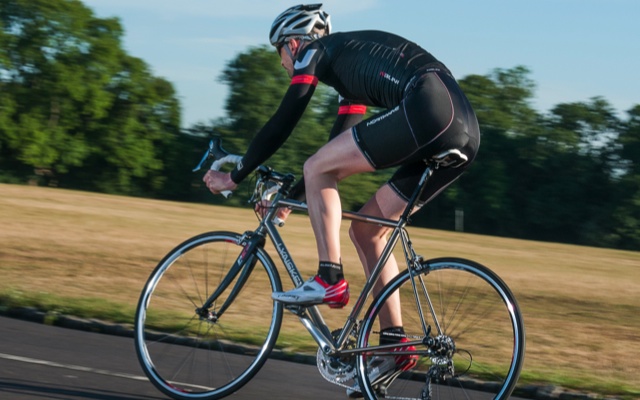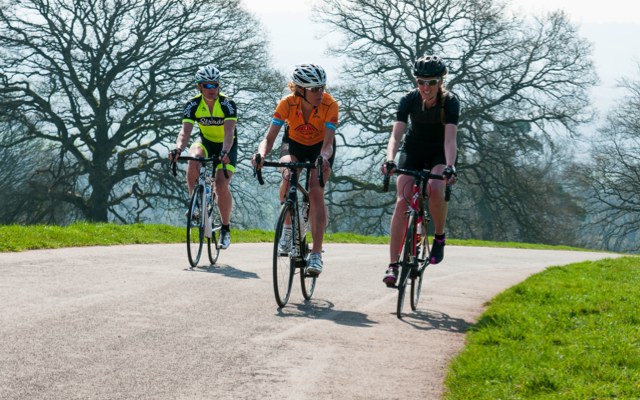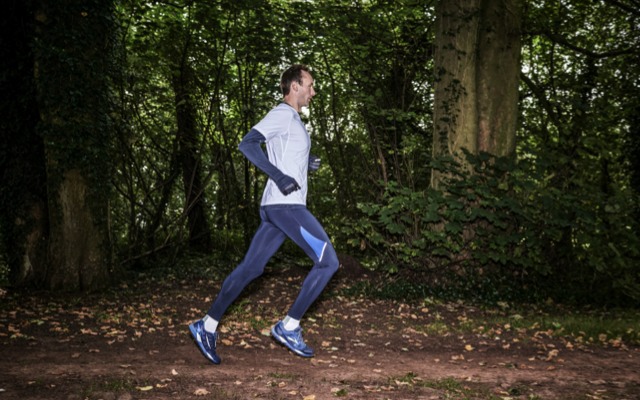Off-season bike & run essentials for triathlon
It's time to add structure to your training and lay the groundwork for the next season, which means regular tempo and threshold run and bike sessions. Nik Cook is here to help with this bumper guide to what you'll need, what to do and how to do it...

Depressing as it may be, the regular triathlon season is over and it’s time to start putting some structure into your off-season training plans.
It’s a massively overused cliché, but winter miles do equal summer smiles! A solid winter of training will lay the foundation for your next season and, if you’re serious about progressing in the sport, off-season training has to be planned, structured and can’t be a last minute panic affair that’s left until spring.
Many endurance athletes in the off-season traditionally dial the intensity right down and simply put in hours of long and steady training.
As age-groupers with work and family commitments limiting training time, however, putting in the 30-35hrs a week that make true base training genuinely effective isn’t an option or necessary.
If you can fit in 10hrs per week, maintaining some intensity in your training will yield far better returns than simply grinding out the precious hours slowly.
You’ve already probably got a few seasons of triathlon or endurance training and racing behind you, and the fitness foundations that will have given you won’t just vanish.
We’re not saying you should be burying yourself with top-end efforts and brutal interval sessions through the entire off-season but, by including regular efforts at tempo, threshold and even higher, you’ll get more bang from your workout buck, escape the drudgery of pure base work and find the transition to racing next spring less of a shock to the system.
Below is a short guide to essesntial gear and four key sessions to help you train wiser this winter…
Essential off-season gear
Indoor Trainer
Turbo, static bike or rollers each have their own pros and cons, but there’s no doubt that for a successful off-season an indoor trainer is a must have. 
Power meter/HRMs
If you don’t monitor intensity, you’re training blind. Power and heart rate combined is the gold standard and now, with power meter prices tumbling, affordable.
Trail Shoes
Off-road running is excellent for strength, power and core stability. It gets you off icy pavements and away from traffic. It should be part of all triathletes’ winter training.
Mudguards
Make a massive difference to component wear and keep your feet dry, plus your ride mates will thank you. Even minimalist clip-ons are better than nothing.
Training zones
The zones you’ll need to work in for the following quartet of off-season sessions:
Zone 1 Less than 85% of lactate threshold
Zone 2 85% to 89% of LTHR
Zone 3 90% to 94% of LTHR
Zone 4 95% to 99% of LTHR
Zone 5 100%+ of LTHR

Session 1 – endurance rides with efforts
Terrain/kit This session requires a 4hr ride route that’s fairly flat for the first hour, has an uninterrupted 20min loop or gentle climb in the second, a steeper climb in the third and a fairly flat run-in for the final hour. It’ll take a bit of planning but is definitely worthwhile.
Tri Benefits Along with giving you a solid 4hrs of endurance training, the sub-threshold, criss-cross and threshold efforts during the second and third hours will deliver a threshold-raising boost and keep you dialled into race intensity.
In the final hour, the sprints provide some valuable neuromuscular stimulation and teach you to dig deep when fatigued. Having a focus for each hour throughout the session also breaks up the monotony of a long ride.

Try this session with some like-minded friends and push each other on
Total duration 4:10hrs
Warm-up Spin easily in Zone 1 for 10mins.
Main session
Hour 1 After warm-up, ride rest of hr at solid Z2.
Hour 2 2 x 20mins in ‘sweet-spot’ – mid Z3-mid Z4. Recover for 10mins in Z2.
Hour 3 10mins alternating 1min low Z4 and 1min high Z4, then 5mins mid Z4. Recover with 15mins easy riding and then repeat.
Hour 4 Ride steadily in Z1/2, but every 15mins sprint maximally for 15secs.
Cool-down 10mins easy spinning.
Session 2 – 2 x 20
Terrain/kit: If you’re heading outside for this workout, you’ll need an uninterrupted flat or gently climbing course that gives you 20mins of solid riding. A local club 10-mile TT course might be ideal. Alternatively, this is an ideal session to complete on your indoor trainer.
Tri benefits: A 2 x 20 workout has been a bread and butter workout for cyclists for years for the simple reason that it’s incredibly effective. It delivers a good threshold boosting training stimulus but also doesn’t demand excessive recovery.
It teaches focus during a relatively long effort and sharpens your ability to sit at that key threshold intensity.
Total duration: 80mins
Warm-up
0-10mins Building through Z1 and Z2.
10-12mins Z3
12-14mins Z4
14-17mins 10secs max sprint, 50secs easy spin.
17-20mins Z2
Main session 2 x 20mins with a 10min recovery. Early in the off-season, make the efforts ‘sweet-spot’ – mid Z3-mid Z4. Slowly build this intensity with the aim being to sit on threshold heart rate or power as accurately as possible. The 10min recovery should be Z1.
Cool-down 10mins easy spinning.
Session 3 – trail run step-up
Terrain/kit: Find the hilliest, muddiest and most challenging trail run you can, that’ll fill all but the final hour of your run.
At the end of that time, you’ll need to come to a non-technical flat trail, be back home or the car, for a quick change into road shoes and the final hour of the run.
Tri benefits: Mixed off-road terrain builds strength, power and stability and, with every footstrike different, overuse injuries are less of an issue. The only issue is that your legs can ‘forget’ how to run consistently and tap out a constant pace.
By finishing up the run with a flat step-up, you address this issue and build a race-winning change of pace.

Total duration 2hrs +
Warm-up Spend the first 10-20mins of
the run in Z1.
Main session Run for at least an hour on the trails trying to stick predominately to Z1-2. You may find you have to push into Z3 on the hills but don’t force it up.
Walking the climbs, jogging the flats and running the downs is a good rule of thumb. Hit the flat/road for your final hour and follow this progression:
0-40mins Mid Z2
40-50mins Mid Z3
50-55mins Build progressively into mid-Z4.
55-60mins Push on, hit Z5 and empty the tank in the last minute.
Cool-down 5mins easy jogging followed by 5mins walking.
Session 4 – out-and-back run
Terrain/kit: A flat or gently rolling and uninterrupted out-and-back running course that’ll allow you to maintain an even intensity or a canal towpath or disused railway line are both ideal.
You can also do this session on a treadmill working to distance and setting the gradient to 1%.
Tri benefits: this session gives you both a solid block of endurance paced running and then, during the second half, you step it up to tempo pace.
Tempo intensity efforts should be a running staple during the off-season, keeping some higher-end fitness and ensuring that you’re not just going out and plodding.
Also, being able to step up to and hold a higher intensity when already fatigued, is a valuable racing asset.
Total duration 80mins
Warm-up Jog easily to the start of your out-
and-back route, working through Z1 for 10mins.
Main session Run 30mins out holding a solid mid Z2. Focus on good form, keeping your cadence up and not plodding or shuffling. Turnaround and increase your intensity to mid Z3, hold it for the return leg and see how much faster you are.
Cool-down 5mins easy jogging followed by 5mins walking.
Top image credit: Jony Gawler




